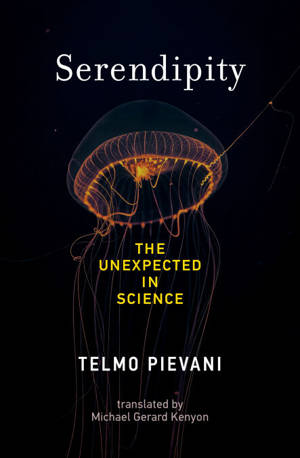
- Afhalen na 1 uur in een winkel met voorraad
- Gratis thuislevering in België vanaf € 30
- Ruim aanbod met 7 miljoen producten
- Afhalen na 1 uur in een winkel met voorraad
- Gratis thuislevering in België vanaf € 30
- Ruim aanbod met 7 miljoen producten
Zoeken
€ 27,55
+ 27 punten
Uitvoering
Omschrijving
From the bestselling author of Imperfection, a theory of uncertainty as the very core of the scientific method—and the essence of its wonder.
How many times have we looked for something and found something else? A partner, a job, an object? The same thing often happens to scientists: they design an experiment and discover the unexpected, which usually turns out to be very important. This fascinating phenomenon is called serendipity, which takes its name from the mythical Serendip, a place from which, according to a Persian fable, three princes set off to explore the world, making chance discoveries along the way. In Serendipity, the award-winning author of Imperfection Telmo Pievani returns to weave a compelling story about the unexpected in science and its fascinating role in our understanding of the world.
Going far beyond the usual examples of penicillin, X-rays, the microwave oven, and Christopher Columbus, Pievani shows that the most surprising stories of serendipity in the history of science reveal profound aspects of the logic of scientific discovery. In this book, he presents for the first time: an archaeology of the idea; a taxonomy of serendipitous discoveries; an “ecology of serendipity” (the surrounding conditions and factors that can promote it); and lastly, a theory of serendipity (why it occurs so frequently in so many sciences). From Zadig to Sherlock Holmes, Pievani shows that such great discoveries are not just the product of luck. Instead, serendipity comes from a mix of cunning, curiosity, sagacity, imagination, and accidents caught on the fly. Serendipity illuminates how much we don’t know and how much we don’t even know we don’t know. Above all, Pievani reminds us that the human brain is of a piece with the world it is investigating—a world so much bigger than our knowledge—and it has also evolved within that world, adapting as it has to.
How many times have we looked for something and found something else? A partner, a job, an object? The same thing often happens to scientists: they design an experiment and discover the unexpected, which usually turns out to be very important. This fascinating phenomenon is called serendipity, which takes its name from the mythical Serendip, a place from which, according to a Persian fable, three princes set off to explore the world, making chance discoveries along the way. In Serendipity, the award-winning author of Imperfection Telmo Pievani returns to weave a compelling story about the unexpected in science and its fascinating role in our understanding of the world.
Going far beyond the usual examples of penicillin, X-rays, the microwave oven, and Christopher Columbus, Pievani shows that the most surprising stories of serendipity in the history of science reveal profound aspects of the logic of scientific discovery. In this book, he presents for the first time: an archaeology of the idea; a taxonomy of serendipitous discoveries; an “ecology of serendipity” (the surrounding conditions and factors that can promote it); and lastly, a theory of serendipity (why it occurs so frequently in so many sciences). From Zadig to Sherlock Holmes, Pievani shows that such great discoveries are not just the product of luck. Instead, serendipity comes from a mix of cunning, curiosity, sagacity, imagination, and accidents caught on the fly. Serendipity illuminates how much we don’t know and how much we don’t even know we don’t know. Above all, Pievani reminds us that the human brain is of a piece with the world it is investigating—a world so much bigger than our knowledge—and it has also evolved within that world, adapting as it has to.
Specificaties
Betrokkenen
- Auteur(s):
- Vertaler(s):
- Uitgeverij:
Inhoud
- Aantal bladzijden:
- 216
- Taal:
- Engels
Eigenschappen
- Productcode (EAN):
- 9780262379649
- Verschijningsdatum:
- 2/09/2024
- Uitvoering:
- E-book
- Beveiligd met:
- Adobe DRM
- Formaat:
- ePub

Alleen bij Standaard Boekhandel
+ 27 punten op je klantenkaart van Standaard Boekhandel
Beoordelingen
We publiceren alleen reviews die voldoen aan de voorwaarden voor reviews. Bekijk onze voorwaarden voor reviews.








